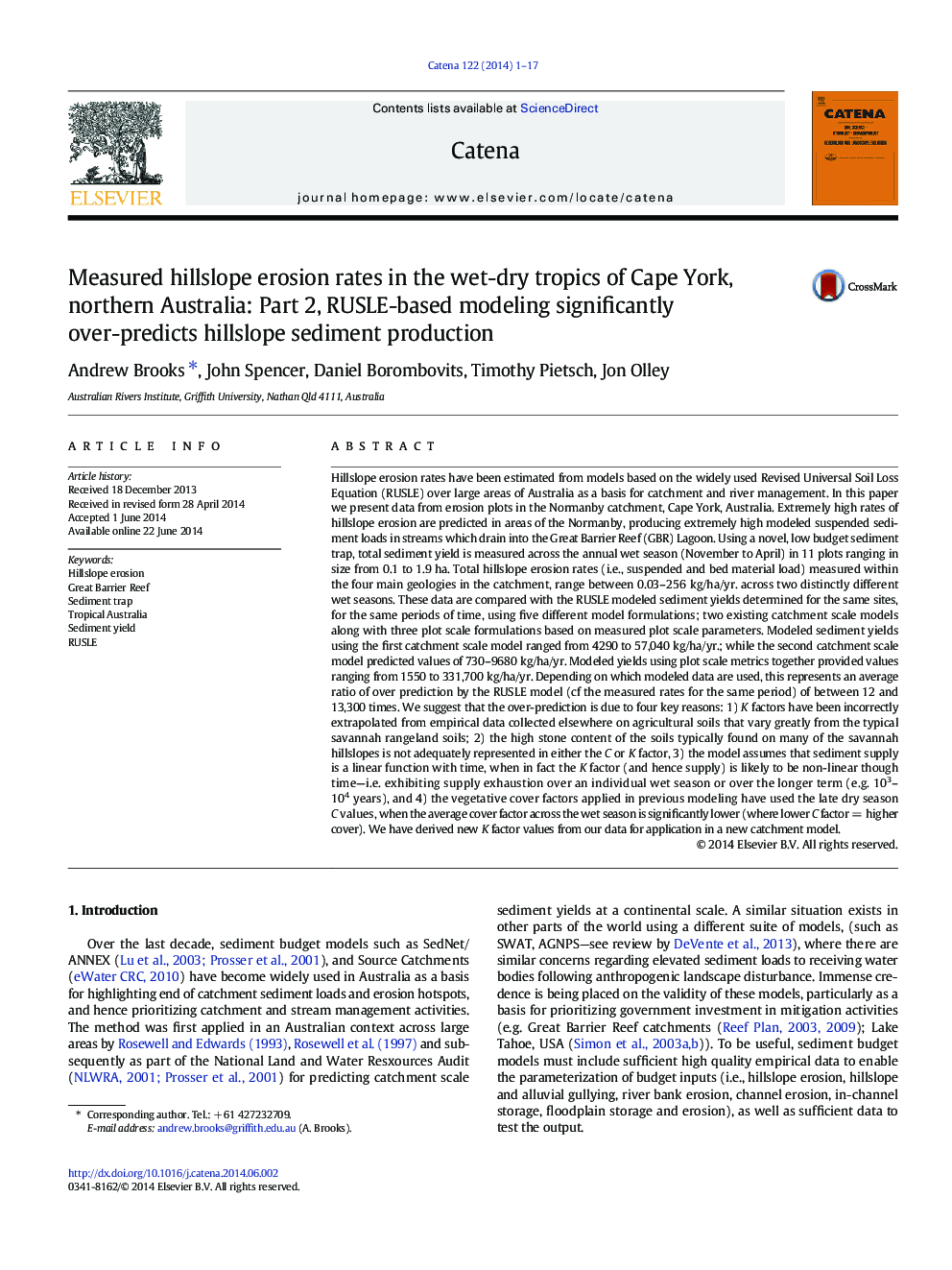| کد مقاله | کد نشریه | سال انتشار | مقاله انگلیسی | نسخه تمام متن |
|---|---|---|---|---|
| 4571394 | 1629230 | 2014 | 17 صفحه PDF | دانلود رایگان |

• Hillslope erosion rate data are presented for the Normanby catchment, Australia.
• The measured erosion rates indicate that hillslope sediment yields are extremely low.
• RUSLE model data for the same areas over-predict yields 1–4 orders of magnitude.
• Over-prediction of the RUSLE C factor can explain some of the variance (4–5 fold).
• However, most of the variance is explained by problems with the K factor.
Hillslope erosion rates have been estimated from models based on the widely used Revised Universal Soil Loss Equation (RUSLE) over large areas of Australia as a basis for catchment and river management. In this paper we present data from erosion plots in the Normanby catchment, Cape York, Australia. Extremely high rates of hillslope erosion are predicted in areas of the Normanby, producing extremely high modeled suspended sediment loads in streams which drain into the Great Barrier Reef (GBR) Lagoon. Using a novel, low budget sediment trap, total sediment yield is measured across the annual wet season (November to April) in 11 plots ranging in size from 0.1 to 1.9 ha. Total hillslope erosion rates (i.e., suspended and bed material load) measured within the four main geologies in the catchment, range between 0.03–256 kg/ha/yr. across two distinctly different wet seasons. These data are compared with the RUSLE modeled sediment yields determined for the same sites, for the same periods of time, using five different model formulations; two existing catchment scale models along with three plot scale formulations based on measured plot scale parameters. Modeled sediment yields using the first catchment scale model ranged from 4290 to 57,040 kg/ha/yr.; while the second catchment scale model predicted values of 730–9680 kg/ha/yr. Modeled yields using plot scale metrics together provided values ranging from 1550 to 331,700 kg/ha/yr. Depending on which modeled data are used, this represents an average ratio of over prediction by the RUSLE model (cf the measured rates for the same period) of between 12 and 13,300 times. We suggest that the over-prediction is due to four key reasons: 1) K factors have been incorrectly extrapolated from empirical data collected elsewhere on agricultural soils that vary greatly from the typical savannah rangeland soils; 2) the high stone content of the soils typically found on many of the savannah hillslopes is not adequately represented in either the C or K factor, 3) the model assumes that sediment supply is a linear function with time, when in fact the K factor (and hence supply) is likely to be non-linear though time—i.e. exhibiting supply exhaustion over an individual wet season or over the longer term (e.g. 103–104 years), and 4) the vegetative cover factors applied in previous modeling have used the late dry season C values, when the average cover factor across the wet season is significantly lower (where lower C factor = higher cover). We have derived new K factor values from our data for application in a new catchment model.
Journal: CATENA - Volume 122, November 2014, Pages 1–17